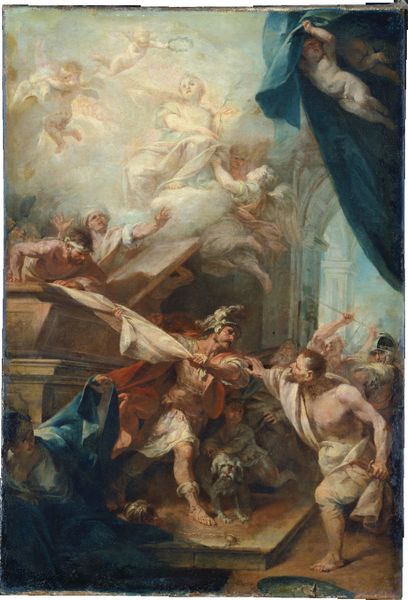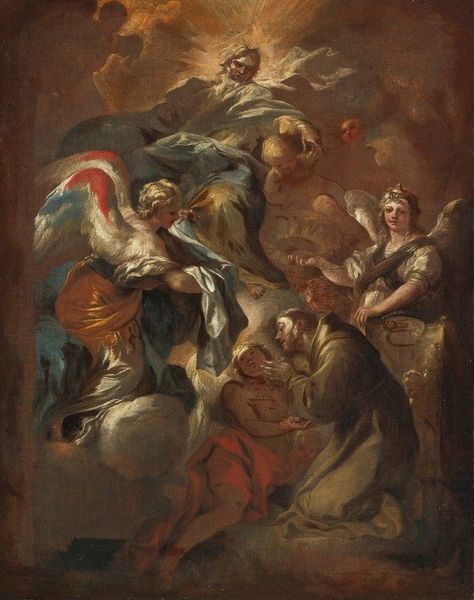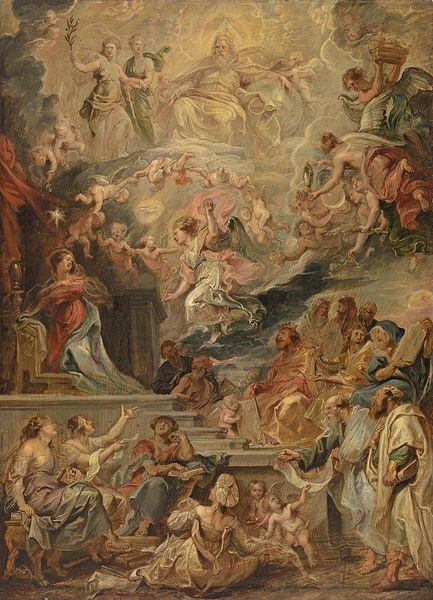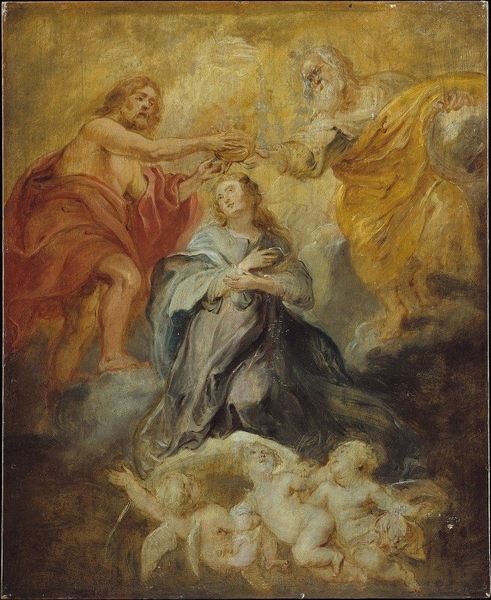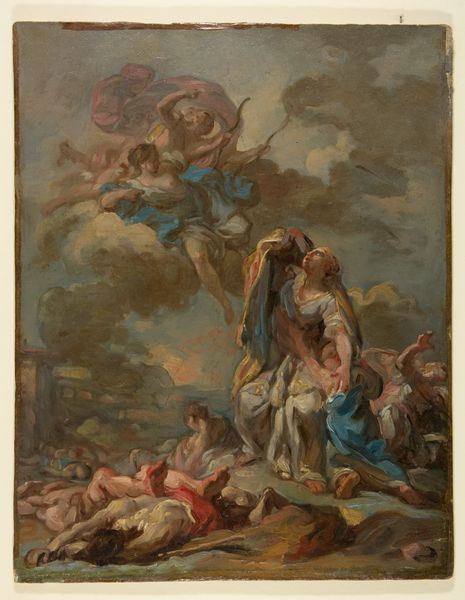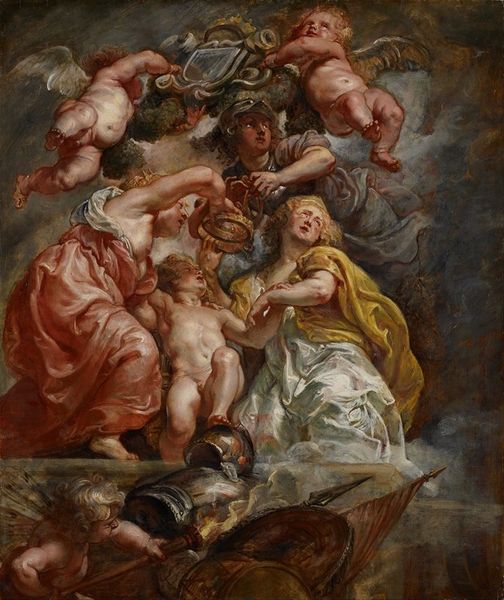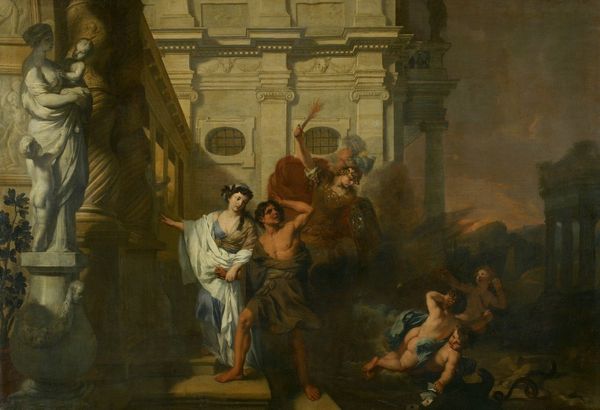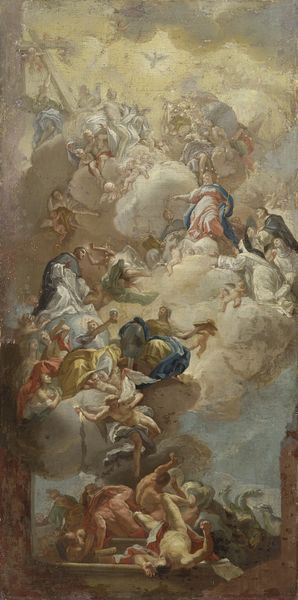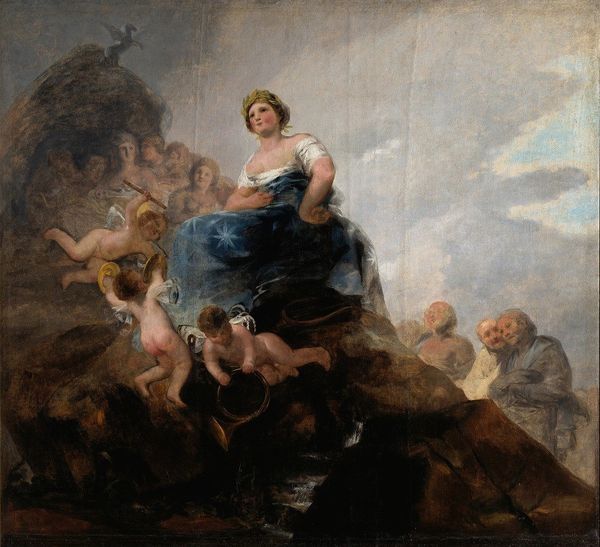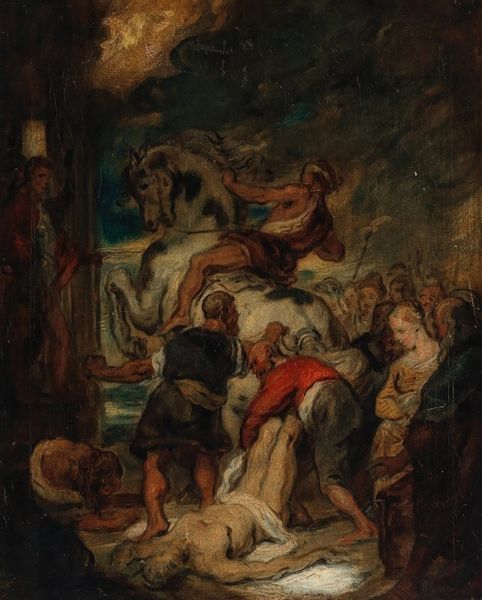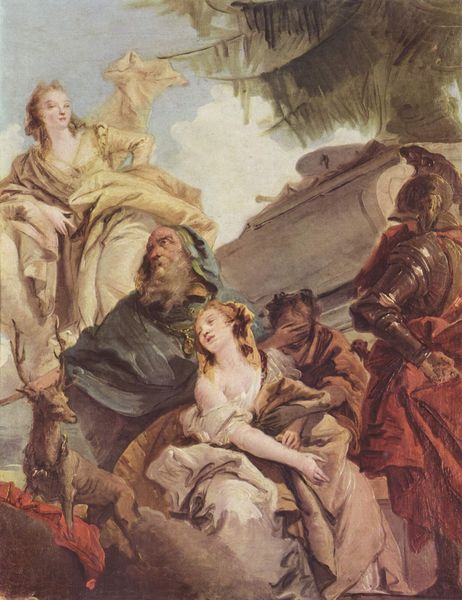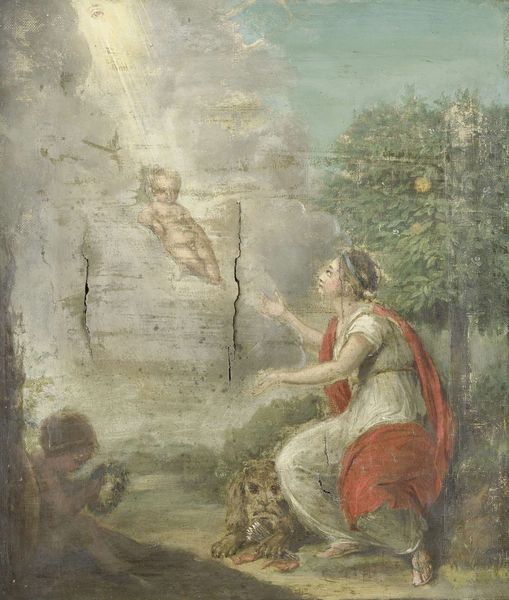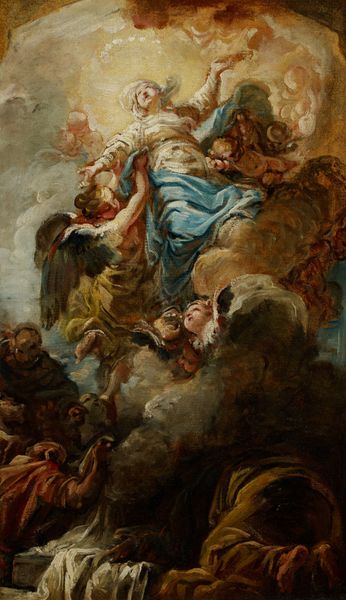
The Immaculate Conception (Joachim en Anna receiving the Virgin Mary from God the Father) c. 1757 - 1759
0:00
0:00
Dimensions: height 49 cm, width 26 cm
Copyright: Rijks Museum: Open Domain
Curator: Before us we have Giovanni Battista Tiepolo's oil painting "The Immaculate Conception (Joachim and Anna receiving the Virgin Mary from God the Father)," dating from about 1757 to 1759. Editor: It's breathtaking. The celestial glow against the earth tones really draws the eye upward. There's such a feeling of… lightness, like everything is floating. Curator: Indeed, Tiepolo's technique contributes greatly. Look at the preparatory nature; visible brushstrokes suggest a dynamism inherent to its Baroque roots but lightened with Rococo sensibilities. I suspect the weaving of this narrative was aided by workshop members, helping in its construction as a process and object. Editor: Symbolically, the upward gaze of Joachim and Anna tells us so much. Their outstretched arms are an invocation, an acceptance. The Virgin, surrounded by cherubs, represents purity, hope... an ideal. It’s heavy with religious iconography but presented with this very approachable grace. Curator: It's compelling to consider what types of pigments Tiepolo used to achieve these ethereal effects, how he layered the oil to get that luminosity. The means and material determine the end, an era’s way to envision a powerful religious vision, in essence, making it a marketable item. Editor: And the way he portrays God the Father – sitting on a celestial globe! A statement of dominion, certainly, but also, almost, a familial presentation. One recognizes familiar motifs across multiple pieces within Christianity and beyond, highlighting visual symbolism which evokes and reiterates beliefs. Curator: Seeing Tiepolo’s deliberate layering, a balance of skilled craftsmanship and divine narrative, reveals a moment where production becomes spiritual testament, of the labor used to evoke such stories and the art’s role in broader social exchanges. Editor: It is truly fascinating how layers of historical meaning reside in symbolic form that continues speaking across the ages. It encourages us to explore what symbols endure and why.
Comments
rijksmuseum about 2 years ago
⋮
This is a study for a large altarpiece. It is an unusual variant on the theme of the Immaculate Conception (the doctrine that the Virgin Mary was conceived without original sin), in which Mary is shown being sent by god directly from heaven to her parents. Tiepolo was among the earliest painters to execute oil-sketches as independent works in which the richness and brilliance of his brushwork and colouring could be fully enjoyed.
Join the conversation
Join millions of artists and users on Artera today and experience the ultimate creative platform.
